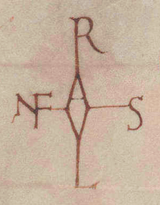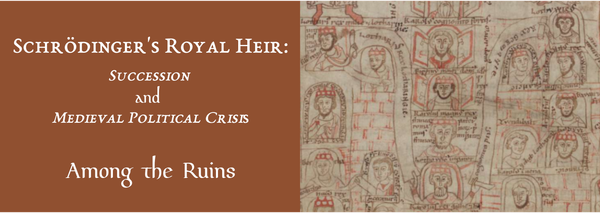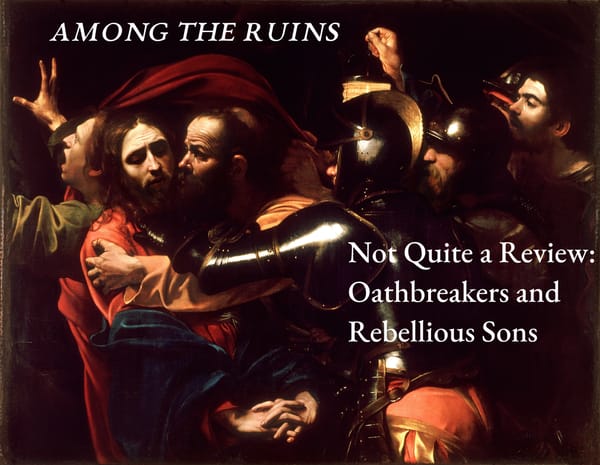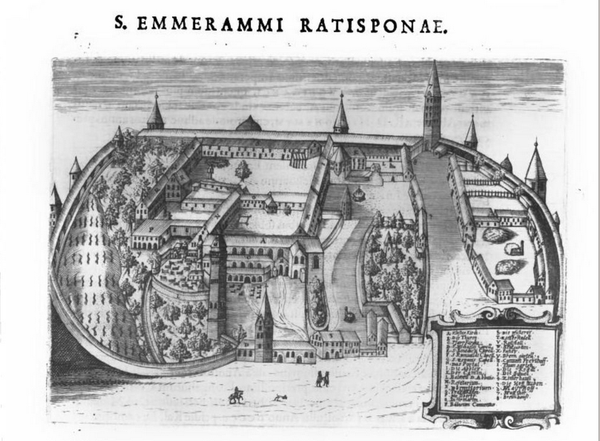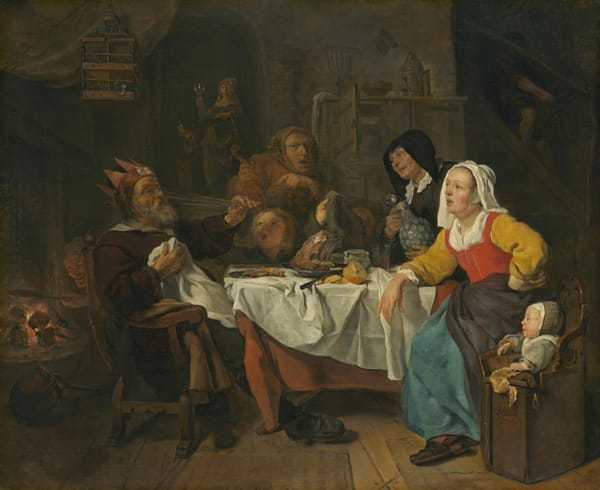Uncovering a Courtier: The Funnily Named Count Isangrim
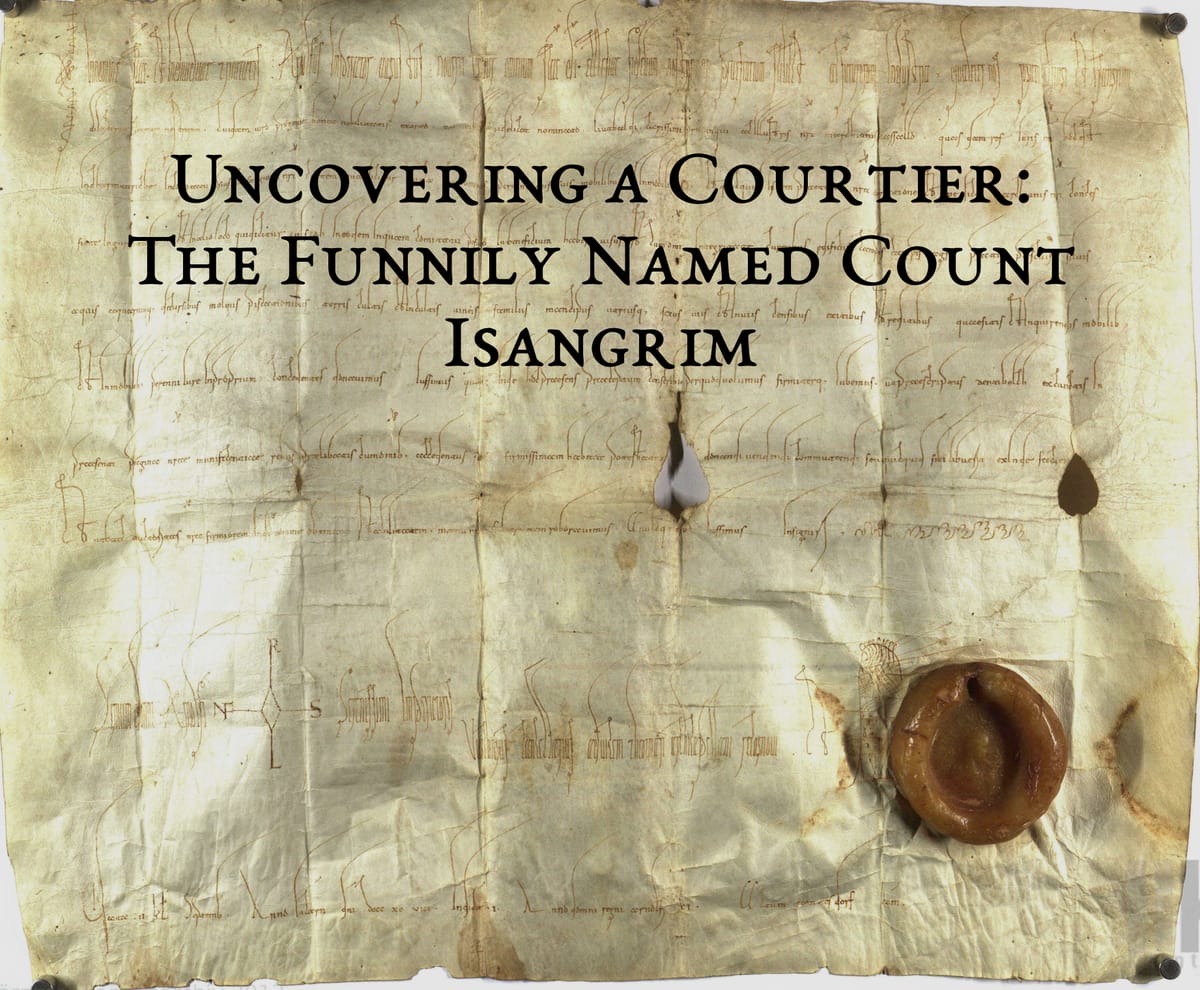
Recently Fraser McNair wrote an interesting piece on defining "the Carolingian court." Fraser rightly notes that "the word ‘court’ encompasses five concepts: the court is a location, a community, an institution, a set of activities, and an identity." I want to add to this picture somewhat by talking about how the court was also dynamic. Courtiers could come and go, and a successful ruler was also adept at managing the various factions at court. When we talk about those associated with the court, there is a danger in not following a chronological approach. Often we have fragmentary information: a blanket statement that someone was close to the king, or elite discontent over their elevation. We can combine this with the charter evidence to provide a more nuanced picture. That is, if we use charters, etc. as a proxy for influence, we need to pay close attention to when those charters are granted. A chronological emphasis allows us to better trace these shifting political networks around the ruler.[1]
We see several new magnates appear at Arnulf's court in the years after his return from Italy in 896. Arnulf had traveled to Rome in 896 and was crowned emperor sometime in February, but was quickly forced to retreat north of the Alps when he was struck by illness. This was not as decisive as has been supposed, something I argued in the final chapter of my dissertation (frustratingly not online yet!) and which I discussed in a different post:
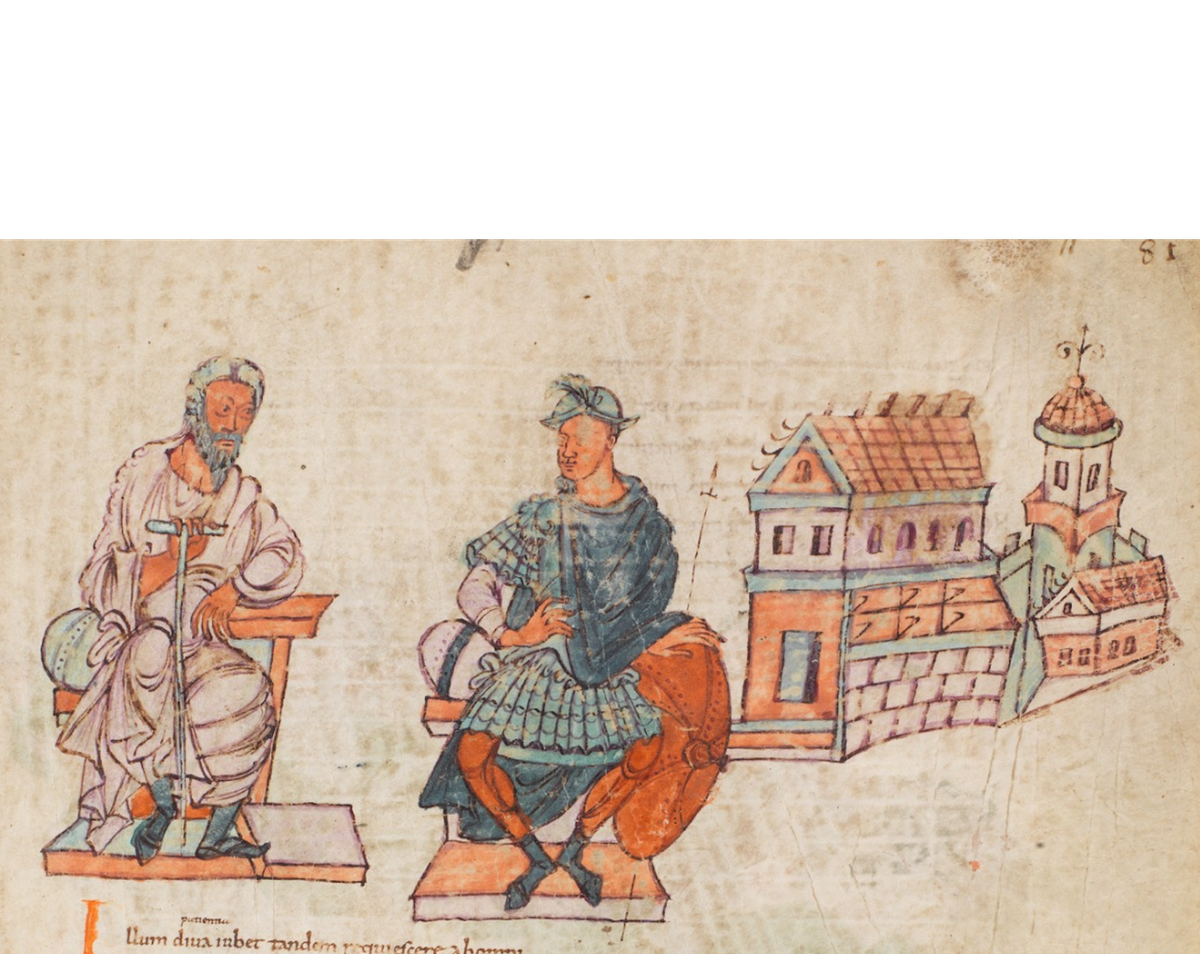
When we look at the number of charters granted, and how many have intercessors, we see that charters were increasingly granted at Regensburg and had a higher percentage of intercessors than before 896.[2] One of these intercessors, named Isangrim, was a count, perhaps with connections to Freising.[3] Isangrim appears in quite a few of Arnulf's charters as an intercessor, meaning he was one of the people who (supposedly) asked the king to issue the grant. All come after 898 so Isangrim was seemingly a newcomer to the court.[4]
A cynical interpretation of Isangrim's appearance at this moment in 898 would be that Arnulf was too ill and was being dominated by his courtiers. A more charitable, and realistic interpretation, I argue, is that as Arnulf became more restricted to Regensburg because of his illness, he relied on courtiers to help spread access to the king. This first charter describes Isangrim as Arnulf's "beloved" count.[5] It is curious that Isangrim appears first in a charter granted at Ranshofen, a center that was important to Arnulf's father Carloman and which Arnulf augmented with relics of the Roman martyr St. Pancras.[6] Isangrim was seemingly traveling with Arnulf at this point, because he was also an intercessor in the next surviving charter from September 898; he was now described as Arnulf's dapifer.[7]
Perhaps I'm a bad Latinist, but I wasn't sure what to make of this term at first. My first port of call when encountering an unfamiliar word is to check out various dictionaries. Wiktionary often proves sufficient here, noting that dapifer is a Medieval Latin word for steward or seneschal, and in English denotes a steward who brings food to the king's table.[8] Generally for titles like this I want to see how common or rare they are. A browse through Hincmar of Rheims' treatise De ordine palatii (On the Order of the Palace) does not reveal any official known as a dapifer among his various lists of palace attendants and staff.[9] I can also search the digitized MGH and get results for words and phrases, an extremely helpful tool for questions like this. When I do so I get a bit of a wonky result, that I have broken out by century:
Some caveats are needed because this data mostly shows texts in "Germany", but also the number of documents increases over the course of the Middle Ages, meaning we might expect to see more instances of almost any word. But here we see a rapid increase in the 12th century and then a decline starting in the 14th century, implying an actual change not tied to increased document production. This all suggests that it wasn't until the 12th century dapifer became a more frequently used term, even if it has earlier examples. A similar courtly term, ministerialis, has almost 136 results in the 9th century, despite it having a much more important connotation in the Later Middle Ages (773 mentions in the 12th century alone).[10]
One of the other instances of a dapifer being mentioned in the ninth century is in one of Carloman's last charters, from 879.[11] That Carloman also had a dapifer suggests that our problem may be the sources, which only rarely mention these officials in the ninth century (at least on the continent). Indeed they may have been more ceremonial or honorary titles to denote status at court. Feasting culture was important to Carolingian kings and especially for upholding ideals of elite masculinity.[12] As such the dapifer would have been a symbolically important role. The charter mentioning Isangrim's role as a dapifer does not survive in the original, so we cannot be sure who wrote it, but most likely they had a knowledge of the inner workings of the court. Indeed the charter itself is somewhat peculiar because it is releasing one of Arnulf's servi, named Gumbolt. The other intercessor besides Isangrim was Burchard, the former abbot of Kremsmünster who seems to have joined Arnulf's court early in his reign.[13] That is, this grant was not necessarily an expression of high politics, but of a more immediately courtly milieu. This is an important point, because while some charters absolutely did function as symbols of high politics, this was not inevitably true.
Taking this all together, I can offer some thoughts on Isangrim and his sudden appearance. The pressures of Arnulf's illness in 896 caused a contraction of the court, and loyal courtiers who were in the area around Regensburg suddenly became more important as distributors of patronage. Isangrim seems to have found a way into court and made himself known, quickly securing an honorific title in the process, dapifer. Or, perhaps more plausibly, Isangrim had already been a fixture of Arnulf's court in a way that did not appear in the charters, and it was only after 896, when Arnulf needed to utilize trusted courtiers more heavily than before, that Isangrim stepped into this role. Regardless, if we only based our understanding of the "court" on total mentions in the charters, it would conceal that Isangrim only becomes important in 898 and 899. It is telling that none of the charters were actually grants to Isangrim. This means that Isangrim's role was much more concerned with spreading access to royal patronage than with amassing properties for himself. Under Arnulf's son Isangrim retained some of his importance at court and seems to have been one of the men surrounding the young king.[14] The court was constantly shifting, and Isangrim is an example of a magnate who was able to successfully leverage their way into courtly honor.
Thanks for reading Among the Ruins! If you haven’t subscribed, please do so below and you can do your part in defeating the algorithm!
- This is something done with success by Horst Lößlein in his book, Royal Power in the Late Carolingian Age: Charles III the Simple and his Predecessors (Cologne, 2019), pp. 149-162.
- From October 898 onward Arnulf only granted charters at Regensburg, DD A 165-176. In 897 and 898 almost 70% and 80% of charters have a named intercessor. In 888-892, for instance, that number is between 30% and 40%.
- The name Isangrim can be found some Freising charters, an early charter dated 855-860 is between the bishop of Freising and "a nobleman named Isangrim" which is possibly a relative (Bitterauf (ed.), Die Traditionen des Hochstifts Freising, no. 754). An Isangrim also appears in a witness list in a charter dated 907-926, Bitterauf (ed.), Die Traditionen des Hochstifts Freising, no. 1040. There are Isangrim's in Freising witness lists throughout the 10th century.
- D A 61, in October 889. However it is not entirely clear if this is the same Isangrim. In this early charter it is spelled Ysangrim, which appears nowhere else in the charters. Isangrim only appears in the charters of Arnulf and his son Louis the Child.
- D A 162.
- On Carloman's use of the center, which he revived after it had fallen into disuse by Louis the German, see T. Zotz, "Ludwig der Deutsche und seine Pfalzen: Königliche Herrschaftspraxis in der Formierungsphase des Ostfränkischen Reiches," in W. Hartmann (ed.), Ludwig der Deutsche und seine Zeit (Darmstadt, 2004), p. 38. DD A 167 and 172. Why St. Pancras is a post for another day, however.
- D A 164.
- Wikitionary is relying on other dictionaries, including Du Cange, which notes it as a steward.
- Hincmar, De ordine palatii, cc. 16-17, pp. 62-66.
- There is a large literature on the ministeriales and their role in the eleventh through thirteenth centuries. For example and with numerous references to other literature: K. Leyser, “The German Aristocracy from the Ninth to the Early Twelfth Century: a Historical and Cultural Sketch,” Past & Present 41 (1968) touches on the ministeriales at points; J. B, Freed, “The Origins of the European Nobility: the Problem of the Ministerials,” Viator 7 (1976): 228-233 contains extended description of older scholarship; J. B. Freed, “The Formation of the Salzburg Ministerialage in the Tenth and Eleventh Centuries: an Example of Upward Social Mobility in the Early Middle Ages,” Viator 9 (1979); B. Arnold, “German Bishops and Their Military Retinues in the Medieval Empire,” German History 7, no. 2 (1989); B. Arnold, “Instruments of Power: the Profile and Profession of Ministeriales within German Aristocratic Society, 1050– 1225,” in Cultures of Power: Lordship, Status, and Process in Twelfth-Century Europe, ed. T. N. Bisson (University of Pennsylvania Press, 1995); P. Neumeister, “Beobachtungen und Überlegungen zur Ministerialität des 9., 10. und 11. Jahrhunderts,” Zeitschrift für Geschichtswissenschaft 43, no. 5 (1995); T. Zotz, “Die Formierung der Ministeralität,” in Die Salier und das Reich, eds. S. Weinfurter and H. Seibert, vol. 3 (J. Thorbecke, 1991); Deutinger, Königsherrschaft, pp. 53-108 on these groups. See also Karl Bosl, “Vorstufen der deutschen Königsdienstmannschaft (Begriffsgeschichtlich-prosopographische Studien zur frühmittelalterlichen Sozial- und Verfassungsgeschichte) (II),” Vierteljahrschrift für Sozial- und Wirtschaftsgeschichte 39, no. 4 (1952): 291-294. And now K. Jaspers and S. Pätzold, eds., Die Kleinen unter den Großen: Ministerialität und Niederadel im spätem Mittelalter und früher Neuzeit (Aschendorff, 2023).
- D Ca 25.
- On the meaning of dapifer see P. Schubert, "Die Reichshofämter und ihre Inhaber bis um die Wende des 12. Jahrhunderts," Mitteilungen des Instituts für Österreichische Geschichtsforschung 34 (1913): 438-439. For a comparative example from the English context see A. Gautier, "Butlers and Dish-Bearers in Anglo-Saxon Courts: Household Officers at the Royal Table," Historical Research 90, nos. 248 (2017). For feasting culture see C. Chandler, "Charlemagne's Table: the Carolingian Royal Table and Food Culture," Viator 50, no. 1 (2019).
- In D A 7 Burchard is described only as Arnulf's fidelis.
- DD LC 11, 27, and 28.

